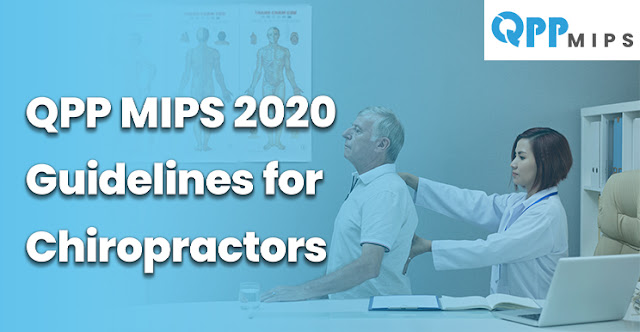The Critical Role of Clean Claims in Healthcare Billing
 Clean claims submission is a cornerstone of financial health and compliance for healthcare practices. From doctors and nurses to surgeons and other healthcare practitioners, the importance of submitting error-free claims cannot be overstated.
Clean claims submission is a cornerstone of financial health and compliance for healthcare practices. From doctors and nurses to surgeons and other healthcare practitioners, the importance of submitting error-free claims cannot be overstated. These claims ensure timely reimbursements, reduced administrative burdens, and robust regulatory compliance. For organizations like P3 Healthcare Solutions, specializing in MIPS Reporting and Consulting Services and Medical Billing Services, the focus is on enabling practitioners to achieve these goals seamlessly.
Fears and Challenges in Healthcare Billing
Healthcare professionals face several obstacles that make clean claims submission vital. The key challenges include:
1. Revenue Loss Due to Rejected Claims
Denied or rejected claims disrupt cash flow and necessitate rework, causing financial stress for healthcare practices. Errors in medical billing can create a domino effect, impacting the bottom line and day-to-day operations.
2. Increased Administrative Load
Time spent on correcting billing errors detracts from patient care, which is the core responsibility of healthcare professionals. Administrative inefficiencies can lead to burnout among staff and practitioners alike.
3. Compliance Concerns
Failure to meet billing standards or regulatory requirements, especially with programs like MIPS (Merit-based Incentive Payment System), can result in penalties, audits, or even legal complications. Ensuring compliance is particularly critical for those engaging in MIPS Reporting and Consulting Services.
4. Patient Dissatisfaction
Billing discrepancies can frustrate patients and damage the trust they place in their healthcare providers. A smooth billing experience fosters stronger provider-patient relationships.
These fears highlight why accurate, compliant billing is essential for healthcare practices striving to balance patient care and operational efficiency.
Goals of Clean Claims Submission
Submitting clean claims not only mitigates the challenges above but also helps healthcare organizations achieve specific goals, such as:
1. Improved Revenue Cycle Management
Accurate claims translate to timely reimbursements, ensuring financial stability. Whether it’s through Medical Billing Services or in-house teams, optimizing the revenue cycle is a key objective.
2. Regulatory Compliance
Healthcare practitioners aim to meet the requirements of programs like MIPS. Clean claims ensure compliance and maximize incentives while minimizing the risk of penalties.
3. Enhanced Operational Efficiency
Accurate billing reduces the need for corrections and resubmissions, freeing up resources for other critical tasks.
4. Patient Satisfaction
Clean claims lead to accurate patient billing, minimizing disputes and fostering trust.
By addressing these goals, practitioners can focus on providing quality care while leaving administrative complexities to experts like P3 Healthcare Solutions.
Solutions for Clean Claims Submission
To ensure clean claims, healthcare practices need strategies that minimize errors and streamline processes. Here are some proven solutions:
1. Investing in Training and Education
Healthcare staff must stay updated on evolving billing standards, coding systems, and payer requirements. Regular training ensures that personnel are well-equipped to handle billing complexities effectively.
2. Leveraging Technology
Advanced billing software can automate processes, flag errors, and ensure compliance. Tools that integrate MIPS Reporting and Consulting Services provide additional benefits by aligning billing practices with regulatory standards.
3. Outsourcing Medical Billing Services
Collaborating with experts like P3 Healthcare Solutions allows healthcare providers to offload the burden of billing. Outsourcing ensures claims are managed by skilled professionals who specialize in both billing accuracy and compliance.
4. Implementing Quality Control Measures
Regular audits and reviews of claims before submission help identify and address errors proactively. This approach ensures all claims meet payer requirements.
5. Focusing on Data Accuracy
Accurate patient and insurance data entry is fundamental to clean claims. Practices should establish robust verification systems to minimize errors at the source.
6. Monitoring and Learning from Denials
Tracking claim denials and analyzing patterns can help identify recurring issues. Addressing these problems promptly prevents future errors.
The Role of P3 Healthcare Solutions
At P3 Healthcare Solutions, we specialize in helping healthcare practitioners overcome billing challenges. Our MIPS Reporting and Consulting Services and Medical Billing Services are designed to:
Optimize revenue cycle management through timely, clean claims.
Ensure compliance with MIPS and other regulatory standards.
Provide expert support that reduces administrative burdens.
By partnering with us, healthcare providers can focus on their primary mission—delivering excellent patient care—while we handle the intricacies of billing and compliance.
The Impact of Clean Claims on Healthcare
Clean claims submission has a ripple effect on the entire healthcare ecosystem. It ensures that:
Practices remain financially sustainable.
Patients experience seamless interactions with providers.
Providers meet regulatory benchmarks, avoiding penalties.
The integration of MIPS Reporting and Consulting Services into billing workflows enhances these outcomes further, aligning financial goals with regulatory requirements.
Why P3 Healthcare Solutions?
Healthcare practitioners need a partner they can trust. At P3 Healthcare Solutions, we bring expertise and dedication to every aspect of medical billing and regulatory compliance. By choosing us for your Medical Billing Services and MIPS Reporting and Consulting Services, you gain:
Accuracy and Efficiency: Our team ensures claims are error-free and submitted on time.
Compliance Expertise: We stay updated on the latest MIPS requirements to help you avoid penalties.
Patient-Centered Focus: With reduced administrative burdens, you can devote more time to patient care.
Contact Us
Clean claims are the foundation of successful healthcare billing. Let P3 Healthcare Solutions simplify the process for you.
Call us at: (844) 557–3227
Address: 3200 E Guasti Rd Suite 100, Ontario, CA 91761, United States
Read More: How Medical Billing Services Empower Independent Physicians?
Labels: AI on Medical Billing and Coding, healthcare industry, healthcare leaders, Healthcare professionals, healthcare service




